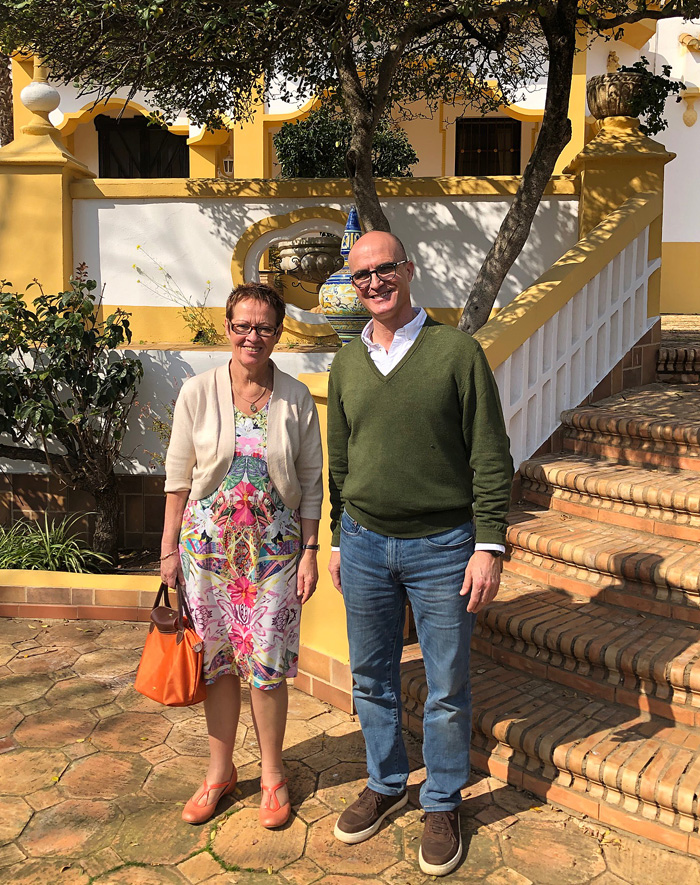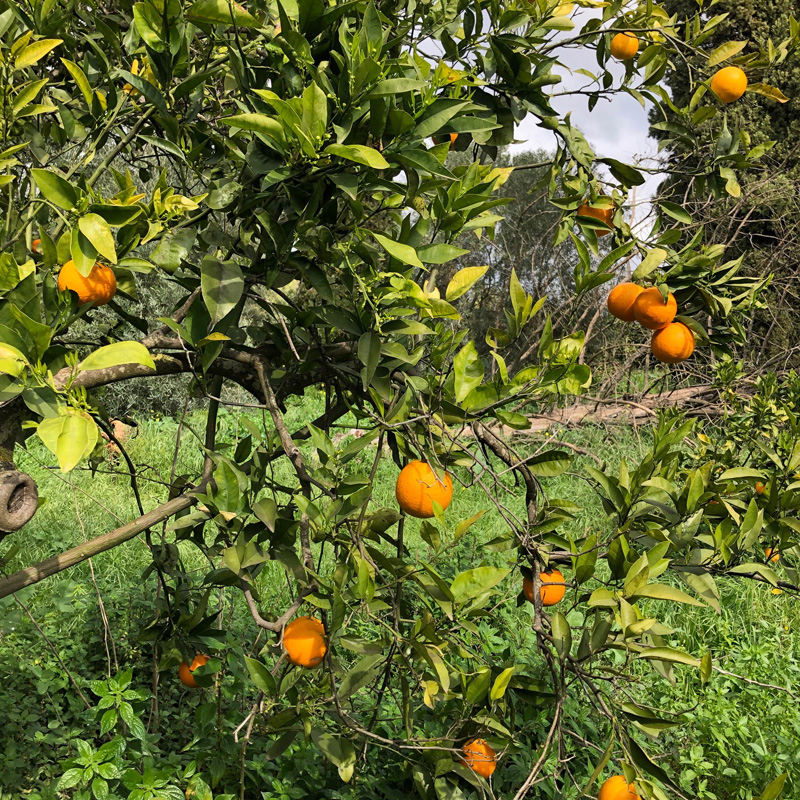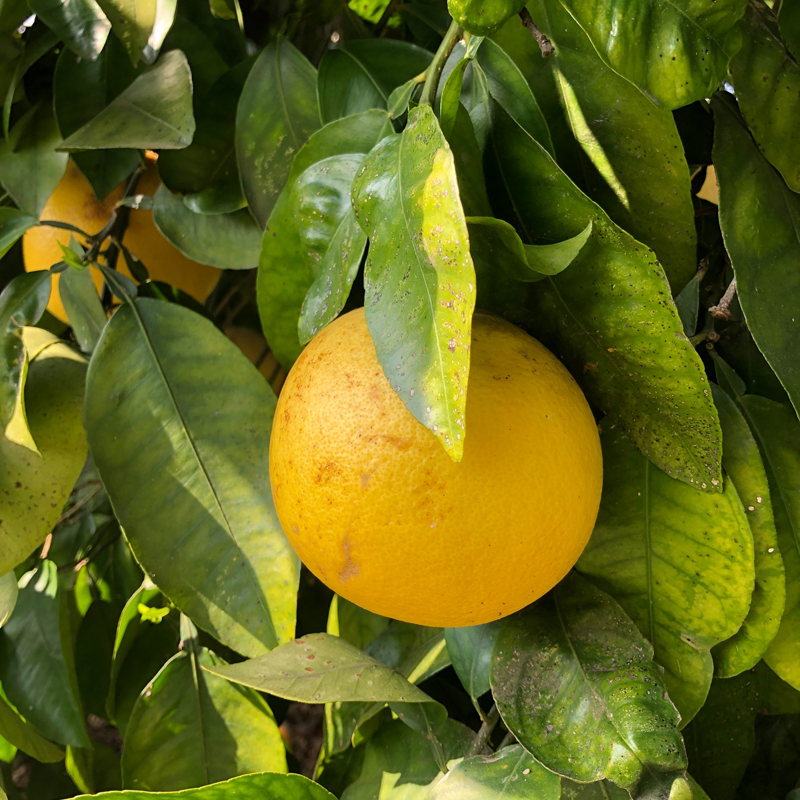Last October when I booked a trip to Seville
 for mid February, little did I realise I would look back on it and remember how in just a month after coming home, Spain would be engulfed in the Coronavirus. It was my third time in Seville, following trips in 2014 and 2016 to the organic grower, Ave Maria. This time I visited La Fuensanta, a farm rented by the family from Ave Maria and one with some unusual citrus.
for mid February, little did I realise I would look back on it and remember how in just a month after coming home, Spain would be engulfed in the Coronavirus. It was my third time in Seville, following trips in 2014 and 2016 to the organic grower, Ave Maria. This time I visited La Fuensanta, a farm rented by the family from Ave Maria and one with some unusual citrus.
As in previous visits to Ave Maria, my guide around La Fuensanta was José Manuel Bautista Vallejo who has a wealth of knowledge and love of citrus grown in Mairena del Alcor. Previously I learnt about the production of Seville oranges, from tree to harvesting, to exporting in pallets chiefly to the U.K, and sweet Navelina oranges grown for other countries. There is nothing quite like tasting fruit from the tree. Sevilles are too bitter to eat, they are best suited for marmalade and culinary purposes, but the sweet Navelina, bursting with juice and aroma makes everyday oranges I buy at home, pale into insignificance.
 We started by tasting Navelina, originally named Smith’s Early Navel, from California. In 1933 it was renamed Navelina and found a home in Valencia,
We started by tasting Navelina, originally named Smith’s Early Navel, from California. In 1933 it was renamed Navelina and found a home in Valencia,
although not widespread in nurseries until 1968. In 1950 in Valencia Province, the sweet Salustiana a large fruit, similar in shape to a grapefruit was introduced in Spain. The fruit is at its best in January, although it will hang on trees into April.
I tend not to associate Blood oranges with Seville, being drawn to Italian ones from Moro, as at home their short availability sometimes means I miss them altogether. Although late in the season, it was good to see and taste a Blood orange, with a distinctive flavour similar to cherries.
At home, Bergamots are considered unusual fruit for preserving, especially marmalade. Over the years my rare forays into making marmalade with them have been disappointing. The ones remaining on a tree in La Fuensanta were, because of the time of year, delicate in flavour and not as juicy as the sweet oranges. Next, I was introduced to a sweet lemon, with the aroma of lemon, a thin rind and subtle sweetness. I brought one home and found the juice pleasant to drink with a shot of vodka and ice. Another time I would like to try them in marmalade.

Marsh Seedless grapefruit originates from Lakeland California, an old variety from the late nineteenth century. At La Fuensanta there was a huge tree set in a secluded, lower level on the farm. It had an abundance of fruit, so much that I was delighted to bring home a few kilos for marmalade. The fruit has a thick rind and extremely juicy. At the time they were picked it was late season. I suspected their pectin and acidity levels had dropped. If correct, I would have to combine them with lemons or limes to make marmalade.
Once home I made four different marmalades, Grapefruit and Lemon, Grapefruit and Ginger, Grapefruit and Lime and Grapefruit and Gin. I used my standard marmalade recipes and the results were exceptional, due to the quality of the fruit. If the idea of Grapefruit and Gin marmalade appeals, I’ve added a recipe to my Members posts.
